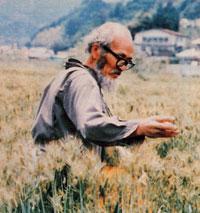 Back in the 1980's, I was inspired to have a natural farm someday, when I read The One-Straw Revolution by Masanobu Fukuoka, in college, and I also saw a documentary on Fukuoka's farm, at a Francis Moore Lappe conference. I experimented on a backyard scale for many years. Neighbors often complained about the jungle in my yard. I kept the "jungles" in raised beds, so the city would let me keep on experimenting, and mowed the lawn with a push-reel mower. By the time it became feasible for me to move back to the country, and start a larger scaled version, I had arrived at a concept that I called the "scythe-based farm". Instead of tilling, which would have required me to have a what I called a roto-tiller or tractor-based farm, I planned on a no-till method of heavy mulching with hay and straw, harvested from my own land with a scythe. Eventually I hoped to grow my own grains as well. The goal is to build the soil from the top, without using fossil fuels. I started out by following Ruth Stout's model of outlining garden beds in a garden close to the house, and I cut the hay from my 10 acre front field, and hauled it back to the garden. I mulched out the soil for the garden beds, and let the grass grow in the pathways in between. I had planned on mowing those with my push-reel mower. The grass there turned out to be clumpy orchard grass on rough clay soil. Pushing the mower over it, made the mower bounce and lurch so much, that it would hardly could cut anything, and the whole process was a miserable amount of work. Since I had a scythe and I wanted to have a scythe-based farm, and I had the space, I decided to move the garden beds far enough apart so that I could mow the grass in between them with a scythe, and to use the cut grass right there on the garden beds for mulch, instead of hauling it all the way from the field. This worked great! However, in time I observed that the mulch didn't break down fast enough to fertilize the soil much, nor smother the grass and weeds for long. Plus, I had a lot of slugs. From my reading I realized that I needed some manure to break down the mulch. Nitrogen breaks down organic matter. So I raised some Welsh Harlequin ducks for the garden. The Welsh Harlequin's mechanical action of snarfeling through the mulch with their bills, in search of worms and slugs, all the while pooping on the mulch, GREATLY accelerated how fast the mulch would break down. So much so that I would have to be careful to keep up with mulching the potatoes, otherwise the mulch would get so thin that the potato skins would turn green, from being exposed to light..  The ducks turned out to be very vulnerable to predators, so I started to raise geese to protect them. I housed the geese in a 14'x24' ft Chick-Inn from FarmTek. I used scythe cut Reed Canary Grass straw and hay as bedding for my geese, and let it pile up deep before cleaning it out. I clean out the goose house once per year, in late summer, after the goslings are too big to need their nests. After a year, I have a densely matted mass of hay/straw and goose manure, about 16 inches deep. It peels off in sheets with a manure fork. This makes an excellent grass and weed killing mulch. I put these mattes of manured bedding, directly on old garden beds that have been reclaimed by too many weeds, or I use them to start new garden beds. Over the years, my garden beds have now spread out into my hayfield, in long rows, following the contours of the slopes. I first mow an area with my scythe. I then plop down the sheets of goose bedding, in a 5 foot wide strip following the contours of the land. When I run out of the manure, I cover the manured mulch with the cut grass and weeds that I just mowed. These long 5ft wide strips of garden beds are each sited at least one scythe stroke apart, so that I can mow in between them with my scythe, or let my geese graze them, when no veggies are growing in the beds. Subsequent mowings are then added to the beds. Green, if I want to smother weeds or grass coming up through the mulch, or dried into hay, if I want to mulch around growing veggie plants, or create a grow-through mulch for new seedings. If the hay turns out to be really good, I will save it for the winter for my geese. I buy hundreds of pounds of grain to feed my ducks and geese each month. In addition to the resulting end product of eggs and meat for us, and more breeding stock for the future, the grains are also my main fertilizer input in the form of manure for the farm. Eventually, I hope to close the loop and produce my own grains. 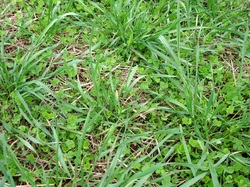 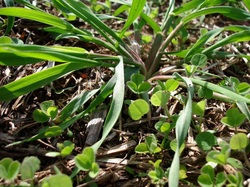
2 Comments
J.C. Beat
3/18/2013 04:28:18 pm
Thank you so much for sharing your trials, experiences, innovations with the Fukuoka and Stout approaches. I am also a great fan of both those growers. It is important that natural growers share their experiences with other people.
Reply
kierkegaardener
6/8/2015 09:41:12 am
Hey there, I've been a struggling young farmer for years trying to find a balance between making money and ecology and I'm tired of having to cut so many corners to keep my shirt. I've been thinking about a similar method for years, and am soon to get some of my own land to start a subsistence farm. I've been growing transplants through mulch for years and it has been the best growing crop always, but hay is too expensive and it is too labor intensive. Can you fill me in on specifics on how your method is doing? I want to scythe into mulched beds on contour, give it some time to break down the sod beneath, and put down transplants, while running chickens inside electro-netting in the walkways, and eventually seeding dynamic nutrient accumulators in the walkways. I've been using a bulb auger to punch through the mulch for transplants and it works great! I would like to have a correspondence with you if possible.
Reply
Your comment will be posted after it is approved.
Leave a Reply. |
Botan AndersonArchives
March 2023
Categories
All
|
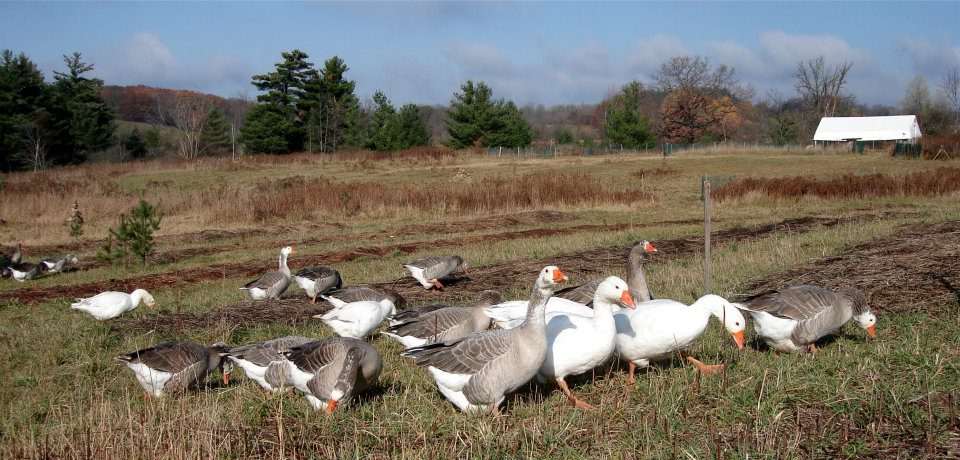
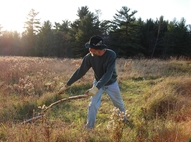
 RSS Feed
RSS Feed